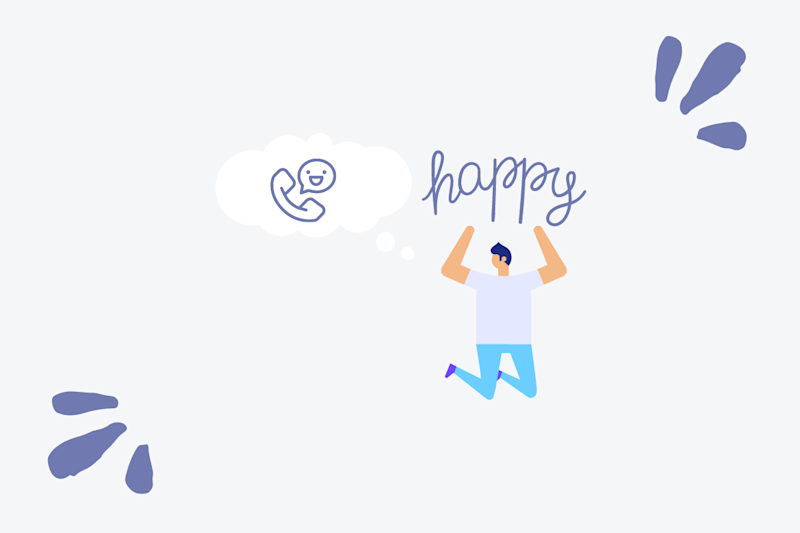It is generally accepted that, in running one's business, one must delight one's customers. A delighted customer stays a customer for longer and brings new customers on board. And it is significantly cheaper to gain new business by word of mouth, as opposed to through marketing efforts. Telephone support is a channel with historically low customer satisfaction ratings. While some may have you believe that phone support is dead and replaced by customer service chatbots and service chats, don't believe the hype. The truth is that a large % of customers still prefer to reach out to their service providers via the phone.
Undelightful realities
- Bewitched, abandoned and overwhelmed. In the initial stages of the pandemic, call centers had to shut down. Some managed to transfer to full-time work from home in a couple of months. For others, it took till the end of the year. At the same time, inbound call volume went up multiple times. We documented some of the horror stories that ensued in this post.
- Lack of resources. A call center agent is far from a high-paying profession. With the government unemployment subsidies at an all time high, many call center workers realized that they can get the same, or nearly the same amount of money, as they get paid, for free from the government and not have to do any work.
- Work from home. While a short term savior, is a long-term liability for an industry as, oftentimes, sensitive, as call center. Forget about taking credit card numbers over the phone. Also, the worker morale suffers significantly.
- Long wait times.
- Multiple holds and transfers while the agent looks up information (or puts the customer on hold to make the customer feel like they are doing something - this is standard practice).
- Agents who can be either too morose or too talkative.
- Long call times.
- Not managing to resolve the issue.
Learning to delight the customer
- Always on, always running.
- Doesn't ask for overtime when it picks up a call at 2:30 AM.
- Zero seconds average wait times.
- Has direct API access to your databases. Doesn't need to put the customer on hold to type and look for data.
- Has the mood you programmed it to have. Does not have bad days.
- Is always pleasant and respectful (if you programmed it to be pleasant and respectful).
- Can handle as many calls at the same time, as you need it to.
- Actually follows the damn script.
- Costs significantly less than a call center agent does.
- Be respectful of your customer's time.
- Solve their problem.
- Leave them with a positive feeling about your product or service.
- Voice. Most speech synthesis either doesn't sound human at all or sounds too perfect. We are constantly improving our speech synthesis engines, working on keeping the voice as human-like as possible through introducing minor mistakes, disfluencies, inconsistencies. These are the qualities that, to the mind of a human, define the speaker as being, indeed, human.
- Digressions. People throw curve balls in the course of conversations. For example, we can be talking about the economy and suddenly you may interject asking how the weather is where I am. As a human, I know how to respond to your question and then come back to the conversation we were having previously. The vast majority conversational/chat bots will not be able to do the same. The ability to leave the main flow of the conversation, go off on a tangent, come back and still retain the context of what was previously discussed is essential to passing the Turing test (the test of human likeness).
- Adaptability. The conversations your AI app has in the summer will have different digressions than the same conversations during Christmas season. Your app has to adapt.
Getting your app to human-like
Look at the existing conversations
- Identify and outline the "perfect world conversation flow". Likely it's the one you handed over to your call center agents as the script to follow. Unfortunately (or fortunately) they don't follow it, because they are human. Don't blame them. Look through their calls, maybe you will identify a script which resolves the issue quicker and more efficiently. Who knows, stranger things have happened.
- Identify the most common digressions. As mentioned, digressions are ways in which your customers sidetrack your call center agents with questions, requests, etc. "Who is this again," "what's your name," "by the way, when did you guys change your logo" are all examples of digressions. Your job is to identify as many of them at the outset as possible.
Test the phrasing
Train on live customer conversations
TL;DR
- It's 2021 - there is no reason to rely on human call center agents and decades-old IVRs. Implement conversational apps and make them as human-like as possible, tailored specifically to your customers.
- Define the perfect world workflow/script.
- Listen to conversations and identify key digressions.
- Let your app talk to real life customer in real life conversations. Review results in analytics view and make adjustments to your app to meet customer expectations.

